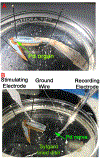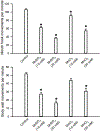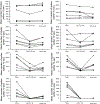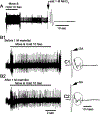Examining the effect of manganese on physiological processes: Invertebrate models
- PMID: 34628058
- PMCID: PMC8922992
- DOI: 10.1016/j.cbpc.2021.109209
Examining the effect of manganese on physiological processes: Invertebrate models
Abstract
Manganese (Mn2+ as MnSO4 &/or MnCl2) is a common and essential element for maintaining life in plants and animals and is found in soil, fresh waters and marine waters; however, over exposure is toxic to organisms. MnSO4 is added to soil for agricultural purposes and people are exposed to Mn2+ in the mining industry. Hypermanganesemia in mammals is associated with neurological issues mimicking Parkinson's disease (PD) and appears to target dopaminergic neural circuits. However, it also seems that hypermanganesemia can affect many aspects of health besides dopaminergic synapses. We examined the effect on development, behavior, survival, cardiac function, and glutamatergic synaptic transmission in the Drosophila melanogaster. In addition, we examined the effect of Mn2+ on a sensory proprioceptive organ and nerve conduction in a marine crustacean and synaptic transmission at glutamatergic neuromuscular junctions of freshwater crayfish. A dose-response effect of higher Mn2+ retards development, survival and cardiac function in larval Drosophila and survival in larvae and adults. MnSO4 as well as MnCl2 blocks stretch activated responses in primary proprioceptive neurons in a dose-response manner. Mn2+ blocks glutamatergic synaptic transmission in Drosophila as well as crayfish via presynaptic action. This study is relevant in demonstrating the effects of Mn2+ on various physiological functions in order to learn more about acute and long-term consequences Mn2+ exposure.
Keywords: Cardiac; Crab; Crayfish; Drosophila; Manganese; Neuromuscular junction; Sensory; Survival.
Copyright © 2021 Elsevier Inc. All rights reserved.
Conflict of interest statement
Declaration of competing interests
The authors declare that they have no known competing financial interests or personal relationships that could have appeared to influence the work reported in this paper.
Figures
















References
-
- Aiello EL 1990. Nervous control of gill ciliary activity in Mytilus edulis. Stefano GB (Ed.), Neurobiology of Mytilus edulis, vol. 10, Manchester University Press, Manchester: (1990), pp. 189–208.
-
- Alexandrowicz JS, 1972. The comparative anatomy of leg propriocetors in some decapod Crustacea. J. Mar. Biol. Assoc. U.K. 52(3), 605–634.
-
- Baden SP, Eriksson SP, 2006. Role, routes and effects of manganese in crustaceans. Oceanography and Marine Biol. 44, 61–83.
-
- Badre NH, Cooper RL, 2008. Reduced calcium channel function in Drosophila disrupts associative learning in larva, and behavior in adults. Inter. J. Zool. Res. 4(3), 152–164.
-
- Baek SY, Lee MJ, Jung HS, Kim HJ, Lee CR, Yoo C, Lee JH, Lee H, Yoon CS, Kim YH, Park J, Kim W, Jeon BS, Kim Y, 2003. Effect of manganese exposure on MPTP neurotoxicities. Neurotoxicol. 24, 657–665. - PubMed
MeSH terms
Substances
Grants and funding
LinkOut - more resources
Full Text Sources
Molecular Biology Databases

